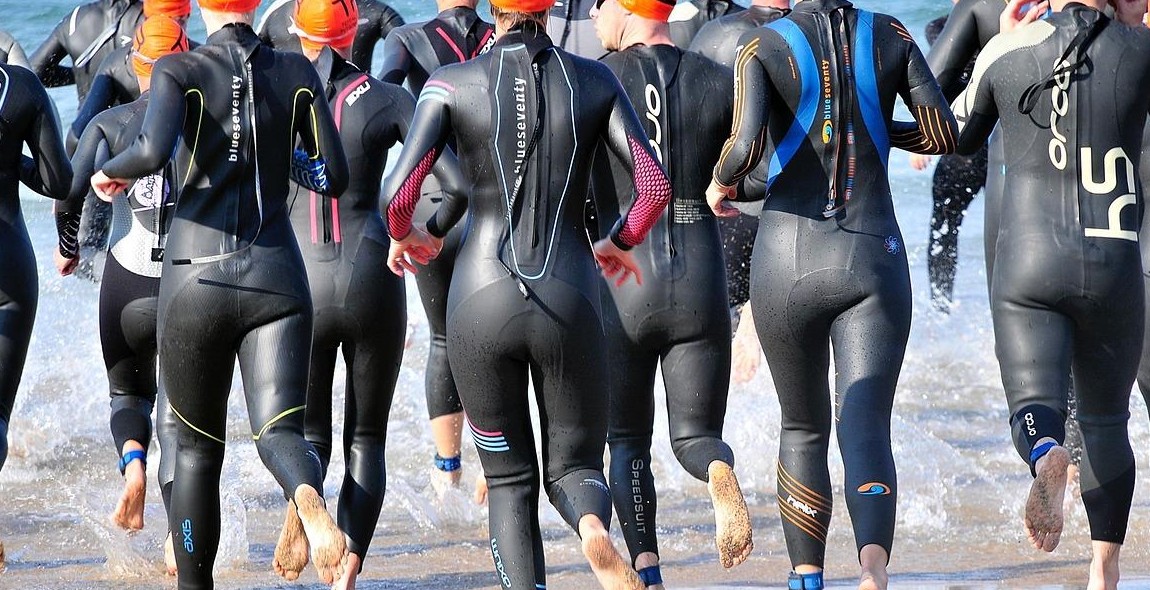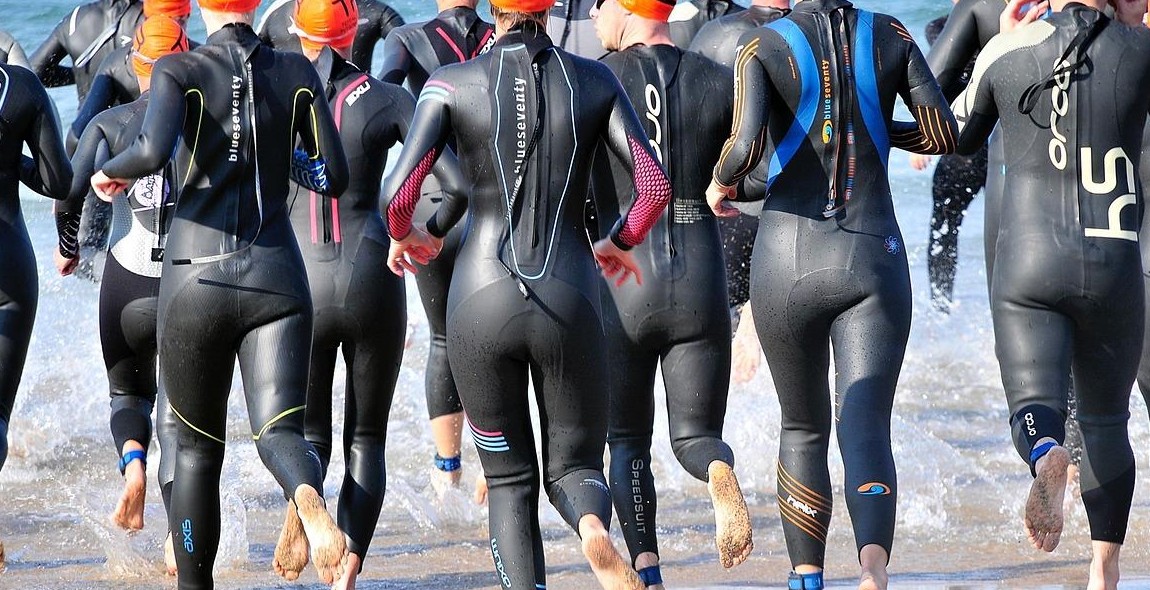How to Train for a Triathlon: Balancing Swim, Bike, and Run Workouts
Training for a triathlon is a challenging and rewarding experience. It requires dedication, discipline, and a lot of hard work. The three disciplines involved in a triathlon are swimming, cycling, and running, and each requires a specific training approach to ensure you are ready for race day.
Swimming
Swimming is often the most challenging discipline for many triathletes, especially those who are not comfortable in the water. However, with proper training, anyone can become a confident swimmer. The key is to focus on technique and gradually increase your endurance.
Cycling
Cycling is the longest discipline in a triathlon, and it requires a lot of time in the saddle. The key to successful cycling training is to balance long, steady rides with shorter, more intense workouts. It’s also essential to work on your bike handling skills and to ensure you have the right equipment.
Running
Running is the final discipline in a triathlon, and it requires a lot of mental and physical toughness. To prepare for the run, you need to focus on building endurance, speed, and strength. It’s also essential to practice running off the bike to get used to the unique feeling of running after a long ride.
In this article, I will share my personal experience and tips on how to balance swim, bike, and run workouts to train for a triathlon successfully. Whether you are a beginner or a seasoned triathlete, these tips will help you achieve your goals and reach your full potential on race day.
Why Balancing Swim, Bike, and Run Workouts is Important
Training for a triathlon requires a balance of swim, bike, and run workouts. Each discipline challenges different muscle groups and requires different levels of endurance, so it’s essential to train in all three to prepare for race day.
Swim Workouts
Swimming is a full-body workout that primarily targets the upper body, including the shoulders, back, and arms. It’s also a low-impact exercise that can help improve cardiovascular endurance. Incorporating swim workouts into your training routine can help you build strength and endurance while reducing the risk of injury.
Bike Workouts
Cycling is a great way to build endurance and improve leg strength. It’s also a low-impact exercise that can help reduce the risk of injury. Incorporating bike workouts into your training routine can help you develop the stamina needed to complete the cycling portion of the triathlon.
Run Workouts
Running is a high-impact exercise that targets the lower body, including the legs and hips. It’s an excellent way to build endurance and improve cardiovascular health. Incorporating run workouts into your training routine can help you develop the stamina needed to complete the running portion of the triathlon.
By balancing swim, bike, and run workouts, you can improve your overall fitness and prepare yourself for the unique challenges of a triathlon. It’s essential to create a training plan that incorporates all three disciplines and gradually increases in intensity to avoid injury and ensure success on race day.

Creating a Training Plan
Training for a triathlon requires a well-designed plan that balances swim, bike, and run workouts. Below are some key steps to consider when creating your training plan:
Assess Your Current Fitness Level
Before starting any training plan, it’s important to assess your current fitness level. This will help you determine where you need to focus your efforts and how much time you’ll need to achieve your goals. You can do this by taking a fitness test or consulting with a personal trainer.
Set Realistic Goals
Setting realistic goals is crucial for staying motivated and avoiding injury. Your goals should be specific, measurable, and achievable within a reasonable timeframe. For example, if you’re new to triathlons, your goal might be to finish a sprint triathlon in six months.
Determine Your Training Schedule
Once you’ve assessed your fitness level and set your goals, it’s time to determine your training schedule. This should include a mix of swim, bike, and run workouts, as well as strength training and rest days. Be sure to gradually increase the intensity and duration of your workouts over time to avoid overtraining and injury.
By following these key steps, you can create a well-rounded training plan that will help you achieve your triathlon goals.

Swim Workouts
Swimming is often the most daunting aspect of a triathlon for beginners. However, with consistent training, anyone can become a strong swimmer. Here are some swim workouts that can help you build endurance, improve technique, and prepare for open water training:
Building Endurance
Endurance is key for a successful triathlon swim. To build endurance, try incorporating longer distance swims into your training regimen. Start with a comfortable distance and gradually increase the distance over time. Aim to swim at least 2-3 times a week, with each session lasting 30-60 minutes.
Improving Technique
Improving your swimming technique can help you swim more efficiently and conserve energy. One way to improve technique is through drills such as kick drills, pull drills, and bilateral breathing drills. It’s also helpful to have a coach or experienced swimmer critique your technique and provide feedback.
Open Water Training
Open water swimming can be very different from swimming in a pool. To prepare for open water swimming, try incorporating open water swims into your training. If that’s not possible, try simulating open water conditions in a pool by swimming with a group, practicing sighting, and swimming in a wetsuit.
| Swim Workout | Distance | Notes |
|---|---|---|
| Endurance Swim | 1000m | Swim continuously at a comfortable pace |
| Technique Drill | 500m | Focus on a specific drill such as kick or bilateral breathing |
| Open Water Simulation | 750m | Swim with a group, practice sighting, and wear a wetsuit if possible |
Remember to always warm up before each swim and cool down afterward. With consistent training, you can become a confident and strong swimmer for your next triathlon.

Bike Workouts
As an experienced triathlete, I can attest to the fact that the bike portion of the race can make or break your overall performance. To prepare for this leg of the race, I recommend incorporating the following types of bike workouts into your training plan:
Hill Training
Triathlon courses often include hills, so it’s important to train on them. Hill training not only helps you build strength and endurance, but also improves your technique and form. Find a hill with a steady incline and ride up and down it multiple times, focusing on maintaining a consistent pace and keeping your upper body relaxed. Gradually increase the intensity and duration of your hill workouts as you get stronger.
Interval Training
Interval training involves alternating between high-intensity efforts and periods of rest or lower intensity. This type of workout can help improve your speed, power, and cardiovascular fitness. Try doing intervals of 30 seconds to 2 minutes at a high intensity, followed by a rest period of equal or slightly longer duration. Repeat this cycle for several sets.
Long Distance Rides
Endurance is key in a triathlon, so it’s important to include long distance rides in your training plan. These rides will help you build the necessary endurance to complete the bike portion of the race. Start with a distance that feels challenging but doable, and gradually increase the distance over time. Focus on maintaining a steady pace and conserving your energy for the rest of the race.
| Workout Type | Benefits |
|---|---|
| Hill Training | Strength, endurance, technique |
| Interval Training | Speed, power, cardiovascular fitness |
| Long Distance Rides | Endurance, steady pace |

Run Workouts
Running is the final leg of a triathlon, and it’s important to be prepared for the challenge. Incorporating a variety of workouts into your training plan can help improve your speed, endurance, and overall performance.
Speed Work
Speed work involves short, intense bursts of running followed by recovery periods. These workouts can help improve your overall speed and running efficiency. Examples of speed work include:
- Interval training: alternating between high-intensity sprints and recovery jogs
- Fartlek training: mixing up running speeds and intensities in an unstructured way
- Hill repeats: running up and down a hill multiple times at a high intensity
Endurance Training
Endurance training involves longer, steady-state runs at a moderate intensity. These workouts help build your aerobic capacity and prepare you for the longer distances of a triathlon. Examples of endurance training include:
- Long runs: running at a steady pace for a longer distance than your usual runs
- Tempo runs: running at a moderate to high intensity for an extended period of time
- Progressive runs: starting at a slower pace and gradually increasing your speed throughout the run
Brick Workouts
Brick workouts involve combining two or more disciplines in a single workout, such as biking and running. These workouts help prepare your body for the unique demands of a triathlon. Examples of brick workouts include:
| Bike-Run Brick | Swim-Run Brick |
|---|---|
| Bike for 30 minutes, then run for 20 minutes | Swim for 20 minutes, then run for 15 minutes |
| Bike for 60 minutes, then run for 30 minutes | Swim for 30 minutes, then run for 25 minutes |
By incorporating a variety of run workouts into your training plan, you can improve your overall performance and feel more confident on race day.
Recovery and Rest
Training for a triathlon is physically and mentally demanding, and it’s important to prioritize recovery and rest to avoid injury and burnout. Here are some tips to help you recover effectively:
1. Active Recovery
Active recovery involves low-intensity exercise that helps to increase blood flow and promote the removal of waste products from your muscles. Examples of active recovery include swimming, cycling at a low intensity, and gentle yoga. Active recovery can help to reduce muscle soreness and improve your overall performance.
2. Rest Days
Rest days are just as important as training days. They give your body time to recover and repair, which can help to prevent injury and improve your performance. On rest days, avoid any strenuous exercise and focus on activities that promote relaxation and recovery, such as stretching, foam rolling, and massage.
3. Sleep
Sleep is essential for recovery and overall health. Aim for 7-9 hours of sleep per night, and try to maintain a consistent sleep schedule. Quality sleep can improve your mood, reduce inflammation, and enhance your athletic performance.
4. Nutrition
Nutrition plays a crucial role in recovery. Make sure to consume a balanced diet that includes plenty of protein, healthy fats, and complex carbohydrates. Stay hydrated by drinking water throughout the day, and consider using supplements such as protein powder or BCAAs to support your recovery.
5. Listen to Your Body
Above all, listen to your body. If you’re feeling tired or sore, take a rest day or adjust your training schedule. Pushing yourself too hard can lead to injury and burnout, so it’s important to find a balance that works for you.
Conclusion
Training for a triathlon can be a challenging and rewarding experience. By balancing swim, bike, and run workouts, you can improve your overall fitness and prepare for race day. Remember to start slow and gradually increase your training intensity to avoid injury.
It’s important to have a plan and set achievable goals for yourself. This will help keep you motivated and on track. Don’t forget to incorporate strength training and stretching into your routine to improve your overall performance and prevent injury.
Proper nutrition and hydration are also crucial for triathlon training. Make sure to fuel your body with healthy, balanced meals and stay hydrated throughout the day and during workouts.
Finally, don’t forget to enjoy the process and have fun! Triathlon training can be a challenging and rewarding experience, but it’s important to remember why you started in the first place. Whether it’s for personal accomplishment or to raise money for a charity, keep your goals in mind and stay focused on the finish line.
- Balance swim, bike, and run workouts
- Set achievable goals and have a plan
- Incorporate strength training and stretching
- Eat healthy and stay hydrated
- Remember to have fun!
| Tips for Triathlon Training | Benefits of Triathlon Training |
|---|---|
| Start slow and gradually increase intensity | Improved overall fitness |
| Include strength training and stretching | Prevention of injury |
| Eat healthy and stay hydrated | Personal accomplishment |
| Set achievable goals and have a plan | Raising money for charity |
